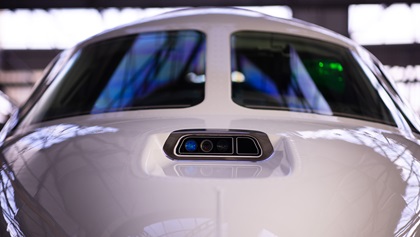Falcon 6X debuts
In a virtual event broadcast over YouTube, Dassault Aviation rolled out its latest business jet—the Falcon 6X.
According to Dassault, the Falcon 6X cabin has the most interior space in the 5,000-nautical-mile segment of business jets, with a 6-foot, 6-inch height; 8-foot, 6-inch width; and 40-foot, 4-inch length. The airplane can be outfitted to carry up to 16 passengers.

At a cruise speed of Mach 0.80, the 6X will fly a maximum range of 5,500 nm, allowing it to fly nonstop from Los Angeles to Geneva. At Mach 0.85 it will fly 5,100 nm nonstop and permit legs as long as Paris to Beijing. Even so, it also has the ability to land at shorter, more challenging airports such as Aspen and the London City Airport. Approach speeds at sea level can be as low as 109 KIAS with eight passengers, three crew, and NBAA IFR fuel reserves.
The 6X also features digital fly-by-wire flight controls, flaperons that can act as both flaps and ailerons, Honeywell’s EASy avionics suite, and Dassault’s FalconEye combined vision system—which the company says is the first head-up display to blend synthetic terrain imaging with navigation guidance that has credit to fly instrument approaches to 100-foot minimums.
First flight is expected in early 2021. Price? A cool $47 million. O’Brien jokingly asked Trappier if he’d take a check. “Cash only” came the answer.





